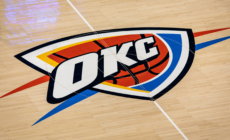-
Trump Threatens Primary Challenge Against Tillis Over Bill Vote - 36 mins ago
-
Senate Takes Up Trump’s Policy Bill, As G.O.P. Scrounges for Votes to Pass It - 37 mins ago
-
Mike Trout Speaks After Angels’ Announce Ron Washington Will Miss Remainder Of Season - about 1 hour ago
-
Between Bombs and the Regime, Iranians Face a Moral Paralysis - about 1 hour ago
-
L.A. County leaders weigh legal action following violent ICE arrests - 2 hours ago
-
Three Biggest American League Snubs From First Round of All-Star Game Voting - 2 hours ago
-
Political Violence Is Part of the American Story. It Is Also Changing. - 2 hours ago
-
L.A. Zoo ticket prices going up following City Council vote - 2 hours ago
-
Thunder Make Major Trade After Winning First NBA Championship - 2 hours ago
-
Dave Parker, Power Hitter for the Pittsburgh Pirates, Dies at 74 - 3 hours ago
Doctor Discusses Fishy Surgery That Saved Bald Eagle’s Life
Thanks to an innovative surgery using fish skin grafts, Kere, a rescued bald eagle, returned to flight over Wisconsin on June 22 after surviving a life-threatening leg injury.
Why It Matters
Bald eagles, the national symbol of the United States, have faced near extinction in the past, with each rescue effort highlighting conservation progress and ongoing challenges.
In Kere’s case, the pioneering use of fish skin grafts to heal traumatic wounds in wildlife opens a potential new chapter in animal medical care.
The bald eagle’s release came days ahead of July Fourth celebrations, restoring an emblem of American freedom to the wild.
What To Know
Kere’s 10-month recovery was led by Dr. Kim Ammann, a raptor specialist and founder at the Winged Freedom Raptor Hospital, a press release provided to Newsweek said.
The treatment represented the first time a bald eagle received this type of skin graft that was provided by Icelandic firm Kerecis.
Kere was discovered in Hayward, Wisconsin, in September 2024 with a 360-degree wound running from her knee to her ankle.
The injury left no healthy skin for traditional treatments and infection threatened her survival.
Ammann then stepped in to provide care.
“With no traditional options left, she turned to innovative alternatives and discovered an Icelandic company called Kerecis that uses intact fish skin from sustainably sourced North Atlantic Cod to support tissue regeneration,” the press release said.
Kerecis, known for developing fish skin grafts for humans, had only recently begun offering veterinary products.
Over 10 months, the cod skin grafts supported tissue regeneration and helped combat infection, which improved Kere’s prospects.
“The trust she put in me made it possible to accomplish what we did. She tolerated bandage changes every few days for months,” Ammann said.
Ammann, who treated over 200 birds in the past year, including 75 bald eagles, noted that Kere’s case demonstrates the importance of innovative veterinary efforts.
The successful use of fish skin grafts may open doors for wildlife rescue centers and veterinarians nationwide.

Photo by Bruce Bennett/Getty Images
What People Are Saying
Dr. Kim Ammann, founder of Winged Freedom Raptor Hospital, said about Kere: “She left the wraps and dressings alone as they were healing her wound. She was eating well and taking necessary medications the whole time.”
Marta Hines, veterinary business development manager at Kerecis, said in the press release: “Our fish skin grafts are used in a variety of different wounds, whether those are traumatic wounds or some that have been out there for a while, and they have not closed in a while, like chronic wounds.”
What Happens Next
The Winged Freedom Raptor Hospital continues to seek support for its conservation and rehabilitation activities.
Kerecis, meanwhile, has indicated continued research and development of its veterinary products.
Source link



















